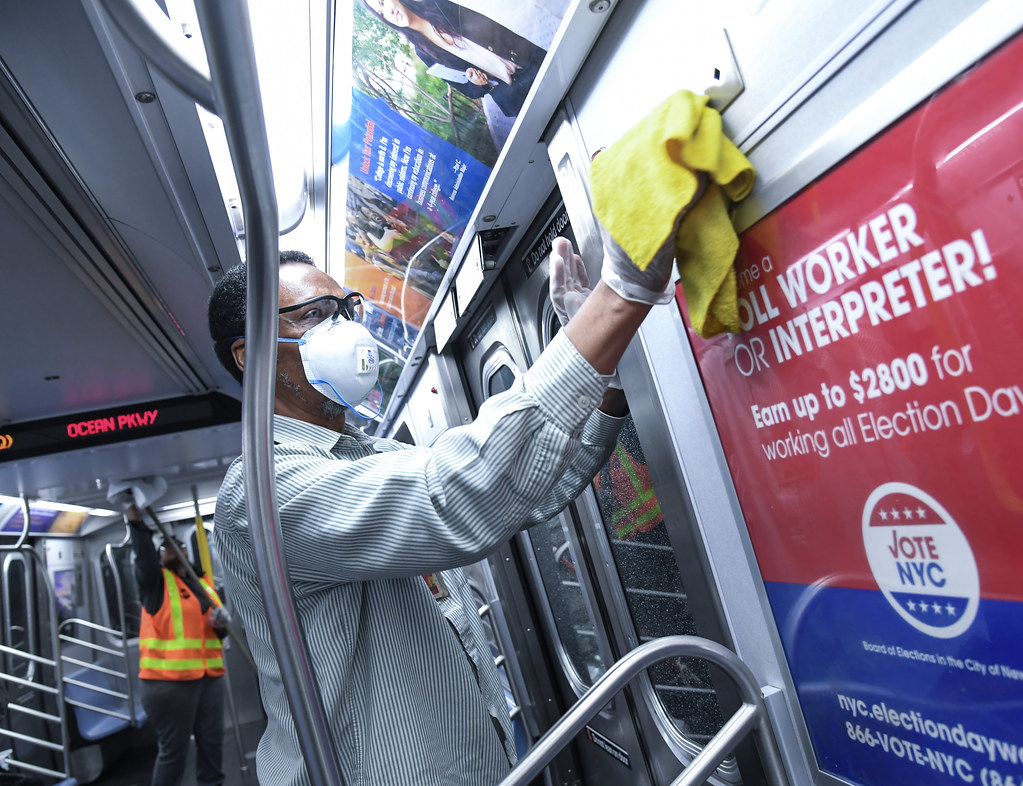As backtracks go, this one should go a little further.
The Centers for Disease Control is no longer recommending that employers incentivize their workers to commute by car alone as businesses reopen during the COVID-19 pandemic, but the agency's revised guidelines still don't do enough to protect workers from the novel coronavirus — or the myriad public health threats posed by our unsafe transportation network.
The original version of the agency's workplace safety recommendations encouraged employers to offer workers who use public transportation "incentives to use forms of transportation that minimize close contact with others, such as offering reimbursement for parking for commuting to work alone or single-occupancy rides."
The CDC have now amended the recommendation as follows:
For employees who commute to work using public transportation or ride sharing, consider offering the following support:
- If feasible, offer employees incentives to use forms of transportation that minimize close contact with others (e.g., biking, walking, driving or riding by car either alone or with household members).
- Ask employees to follow the CDC guidance on how to protect yourself when using transportation.
- Allow employees to shift their hours so they can commute during less busy times.
- Ask employees to wash their hands as soon as possible after their trip.
The minor tweak came after major backlash from media outlets like Streetsblog and leading transportation organizations like the National Association of City Transportation Officials, the American Public Transportation Association, and Smart Growth America.
Some advocates offered faint applause to the CDC for no longer exclusively endorsing a mode of transportation that directly exacerbates the impact of COVID-19, especially in low-income black communities. The CDC has a long history of pointing out the broad spectrum health impacts of tailpipe emissions, vehicle crashes, and car-dependent sedentary lifestyles — which it makes it particularly boggling that the agency is still encouraging employer incentives for driving.
"This was an important recognition by CDC of the ways that their previous guidance actually contradicts decades-long work within their own organization to help address health by encouraging more walking, more biking, and more transit use in metro areas across the country," said Steve Davis of Smart Growth America in an email (emphasis his). "And to speak to equity, if everyone starts driving, you better believe the impact of that is not going to fall primarily on wealthy, white commuters, but on black Americans, lower-income communities and other communities of color."
Other advocates applauded the CDC for no longer simply assuming that poor workers could gain access to a car in the midst of a global recession and a historic unemployment crisis.
"To afford a car, you have to be able to afford insurance and maintenance," said Basav Sen, climate justice project director at the Institute for Policy Studies, in an interview at E&E News. "And the deck is stacked against communities of color because they typically pay higher insurance rates if they live in ZIP codes with higher crime rates. So yes, there is a race and class bias in saying, 'You can just drive to work.'"
But even the new-and-improved guidelines still don't adequately address the safety needs of vulnerable road users — or the inequities disproportionately faced by people who are black, brown, and/or poor.
For one, the CDC still encourage employers to provide financial incentives for every mode except transit use — despite emerging evidence from East Asian countries like Korea and Japan that transit might still be safe during the pandemic, especially if networks undertake proper protocols, like frequent vehicle cleanings and supplying passengers with masks. The advisement threatens to starve transit networks further when fare collections are already at historic lows, rendering transit agencies unable to provide adequate service to the riders who have no choice but to remain. Low-income workers with long commutes, who generally cannot afford cars or get to work via active transportation modes, disproportionately rely on transit.
Providing employer-based financial incentives to bike or walk is great, but it won't do much good if the many safety barriers to active transportation that walkers and bikers still face are not addressed. Of course, workplace leaders alone can't fix those, but they can do their part, by leveraging their influence as a business community with government officials to support policies to end police harassment, brutality and killing — a significant barrier to the mobility of BIPOC — and implement Vision Zero policies, programs and infrastructure.The CDC did not respond to a request for comment about how the agency came to the new recommendations, changes that don't happen without substantial internal discussion.






